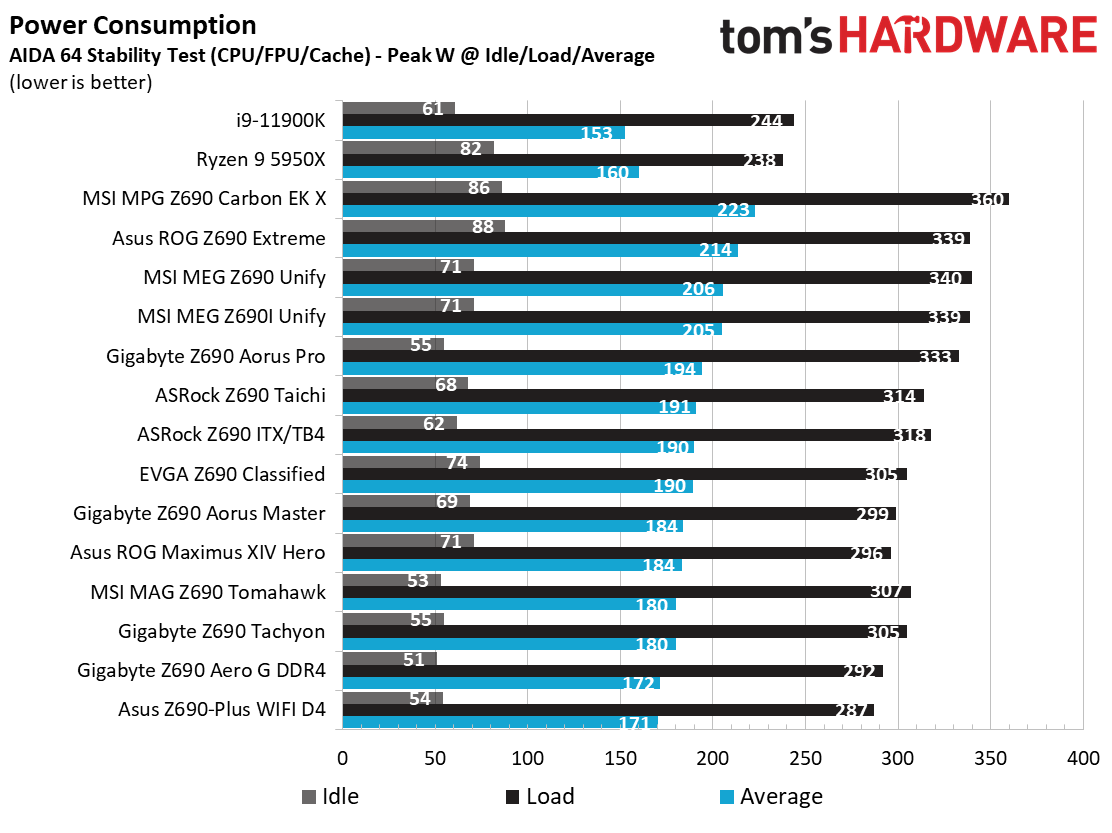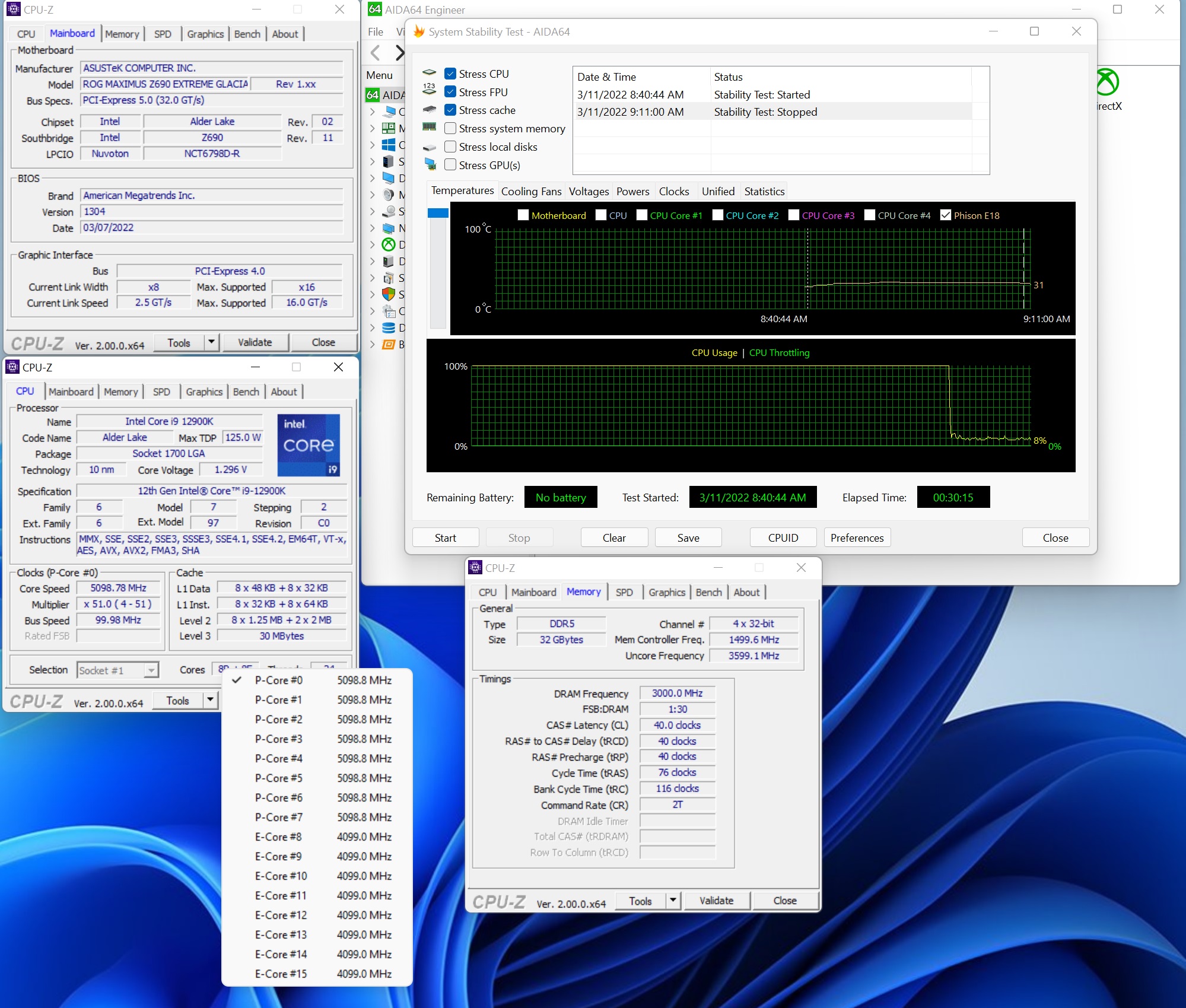Why you can trust Tom's Hardware
Our standard benchmarks and power tests are performed using the CPU’s stock frequencies (including any default boost/turbo), with all power-saving features enabled. We set optimized defaults in the BIOS and the memory by enabling the XMP profile. For this baseline testing, the Windows power scheme is set to Balanced (default), so the PC idles appropriately.
To get the most out of the Intel Alder Lake chips, you need to be on Windows 11 with its updated scheduler. In most cases, Windows 10 performs well. However, some tests (Cinebench R20, Corona and POVRay) take a significant hit. In short, if you’re going with Alder Lake, you need to upgrade to Windows 11 for the best results across the board. That may change with patching and updates in the future, though.
Synthetic Benchmarks
Synthetics provide a great way to determine how a board runs, as identical settings should produce similar performance results. Turbo boost, wattage and advanced memory timings are places where motherboard makers can still optimize for either stability or performance, though, and those settings can impact some testing.
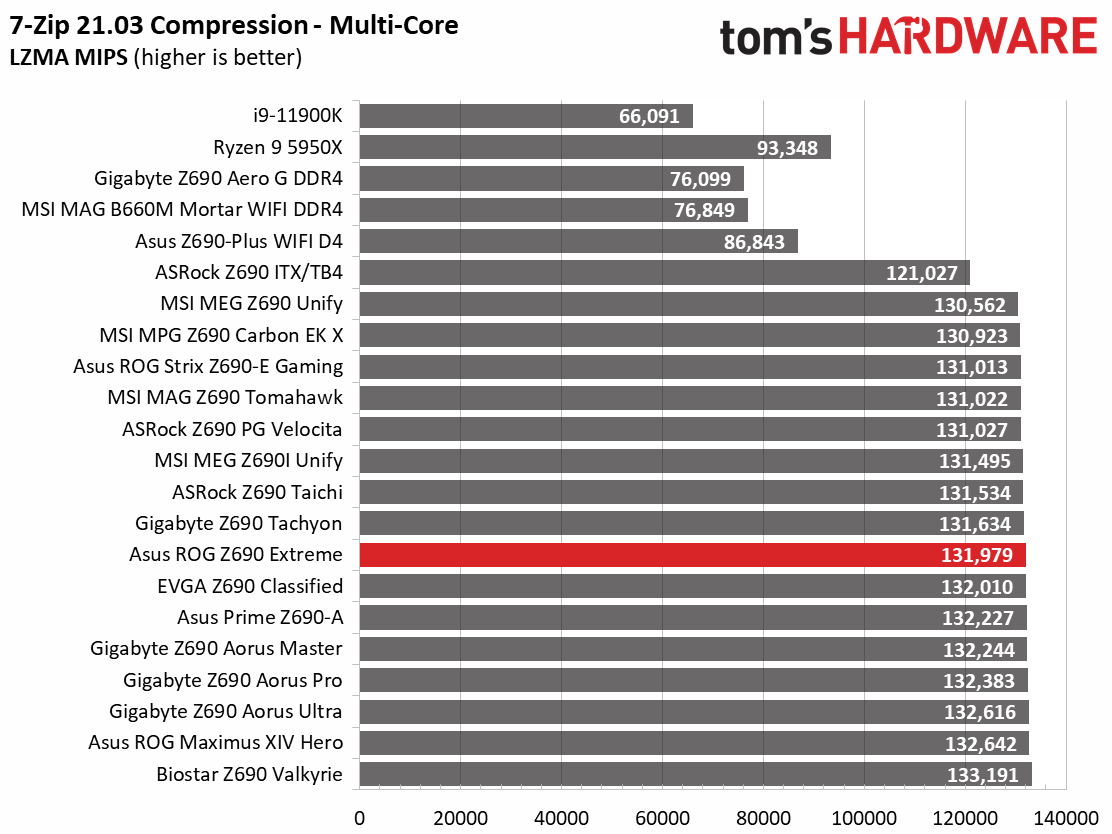
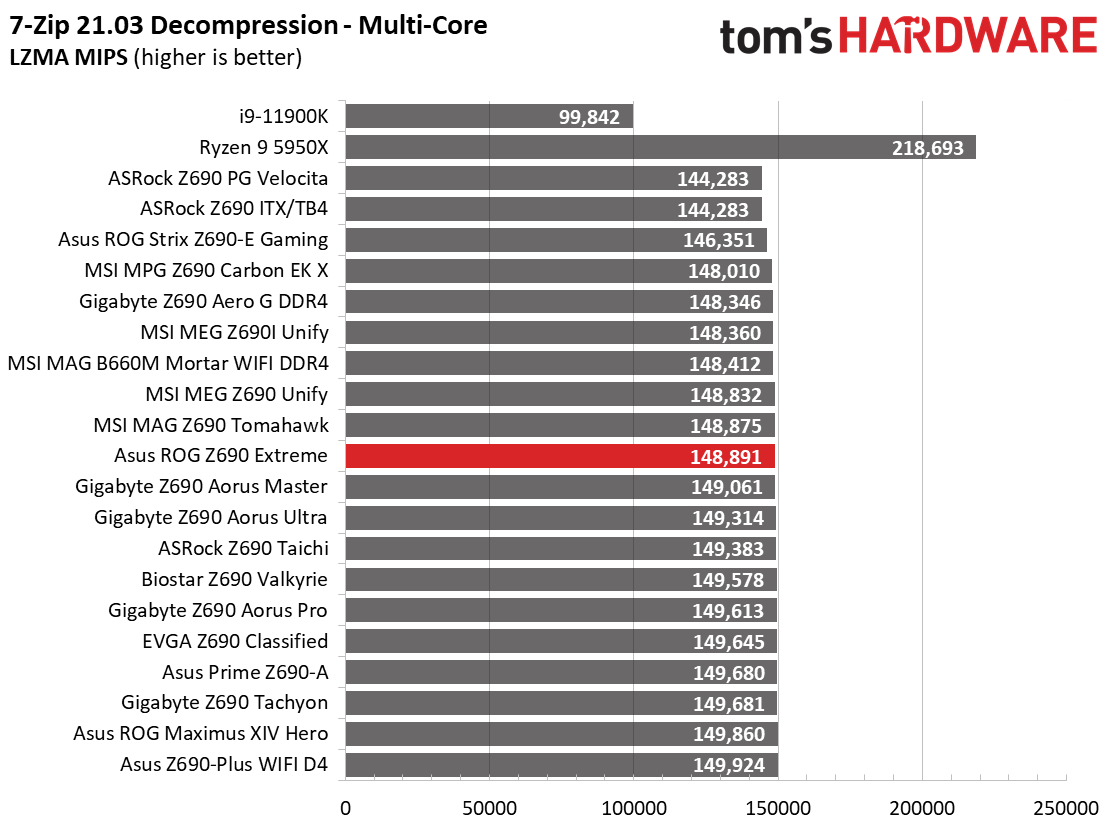
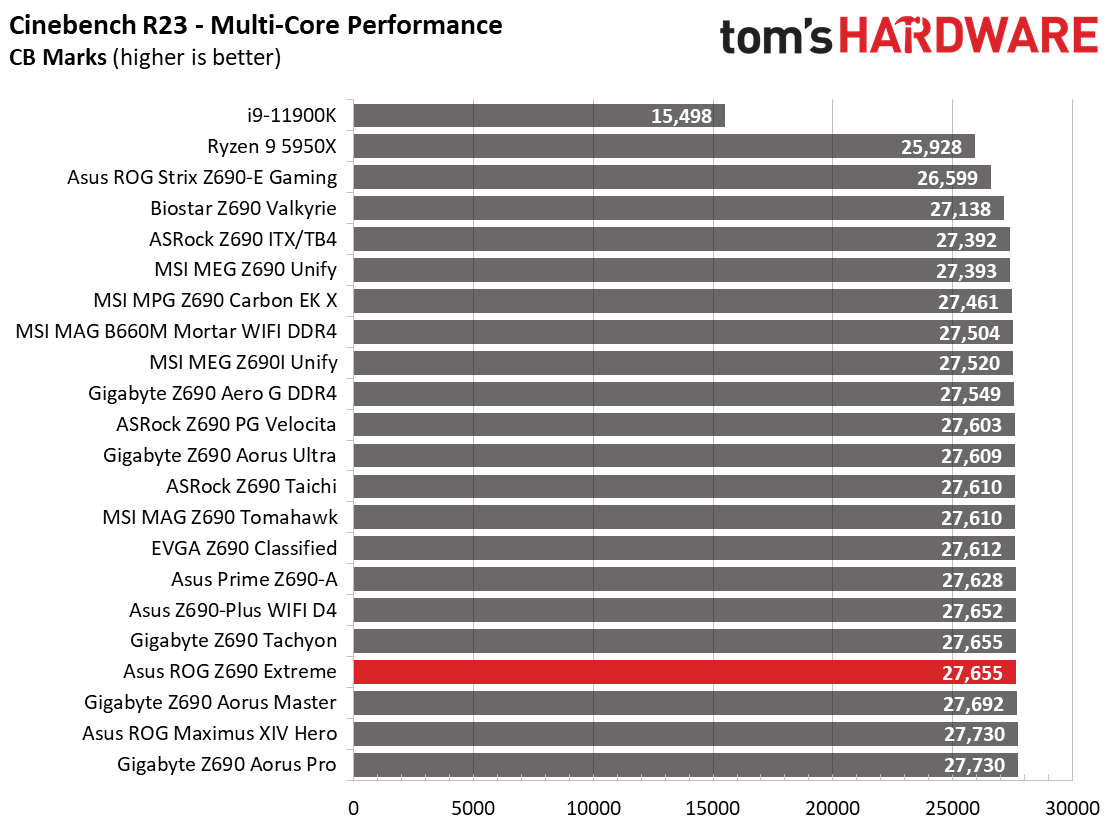
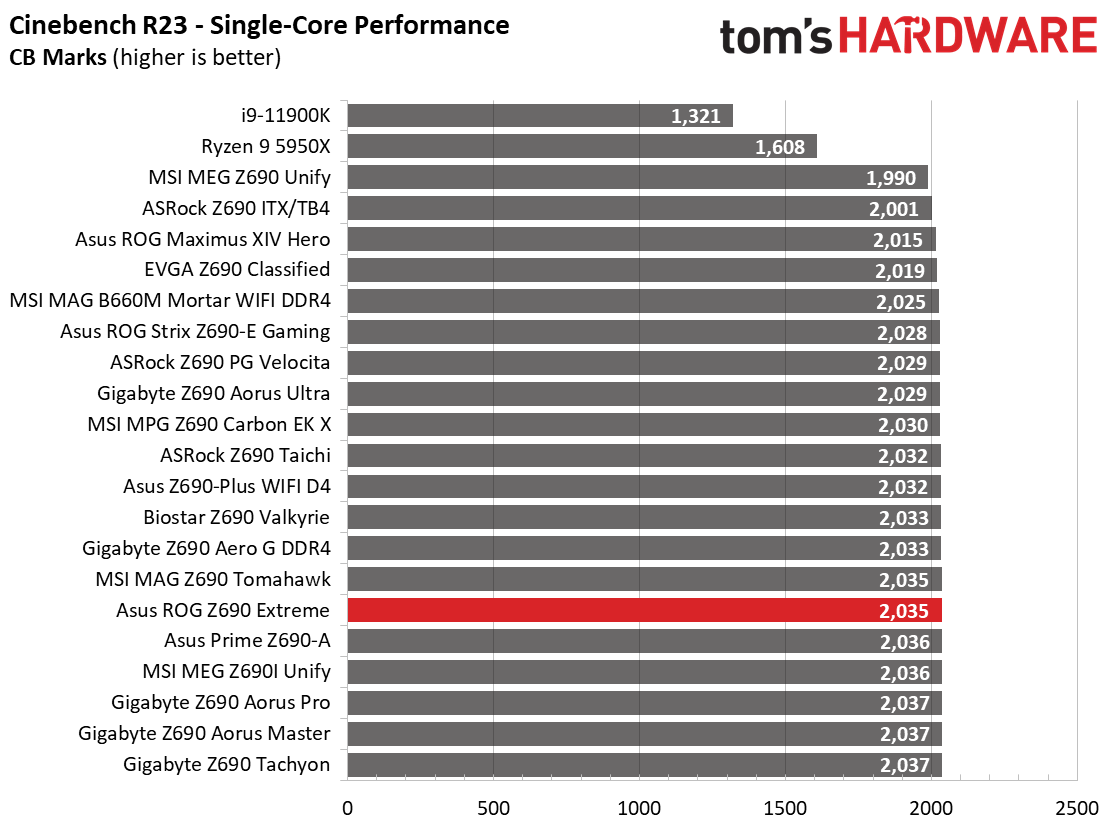
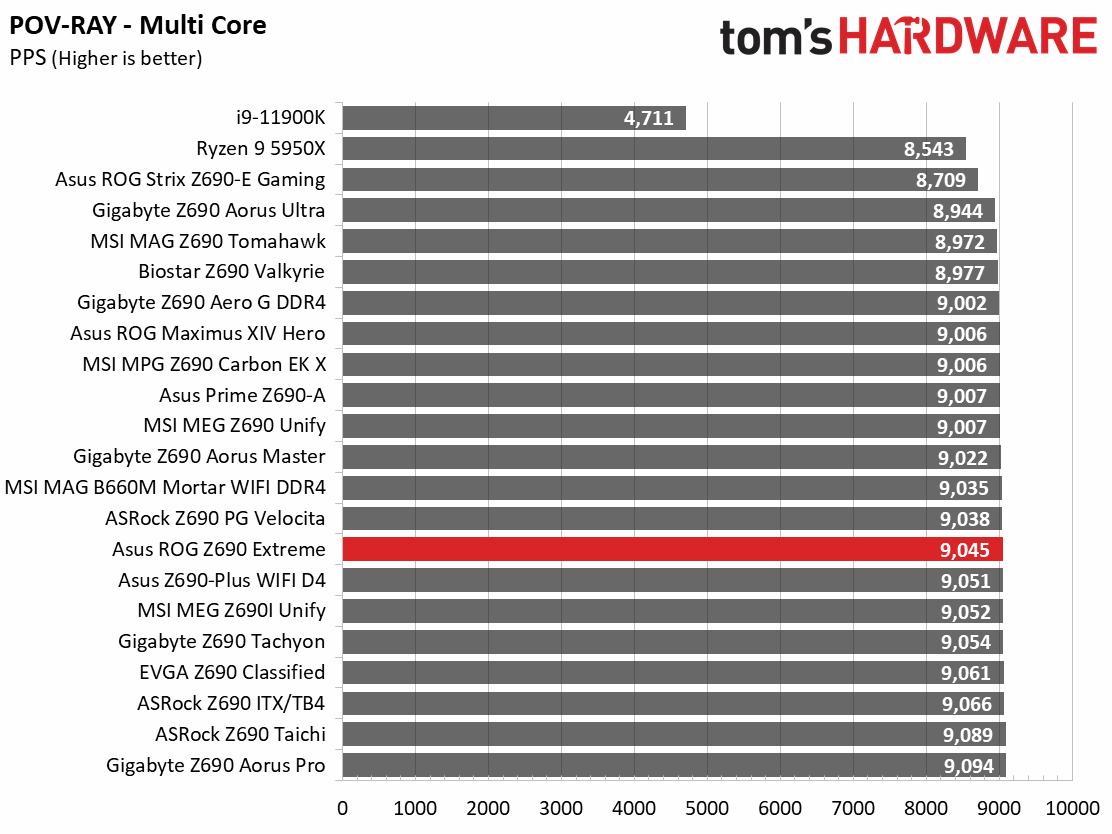
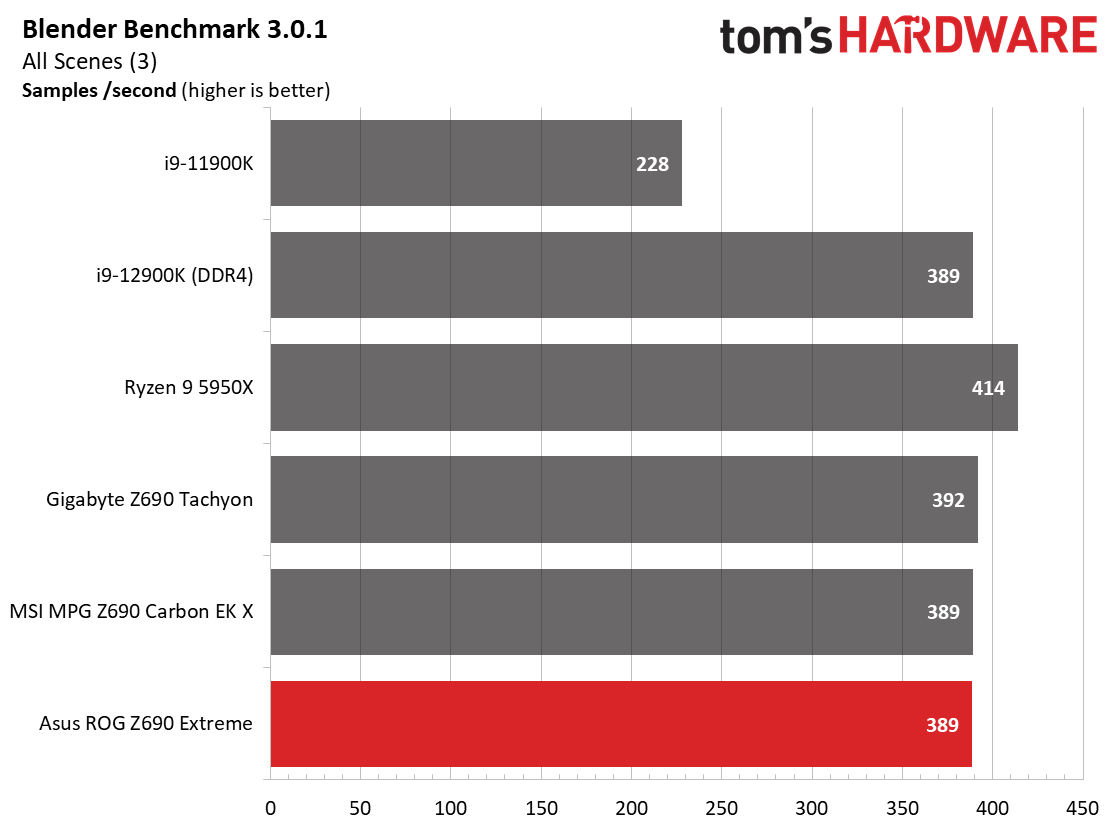
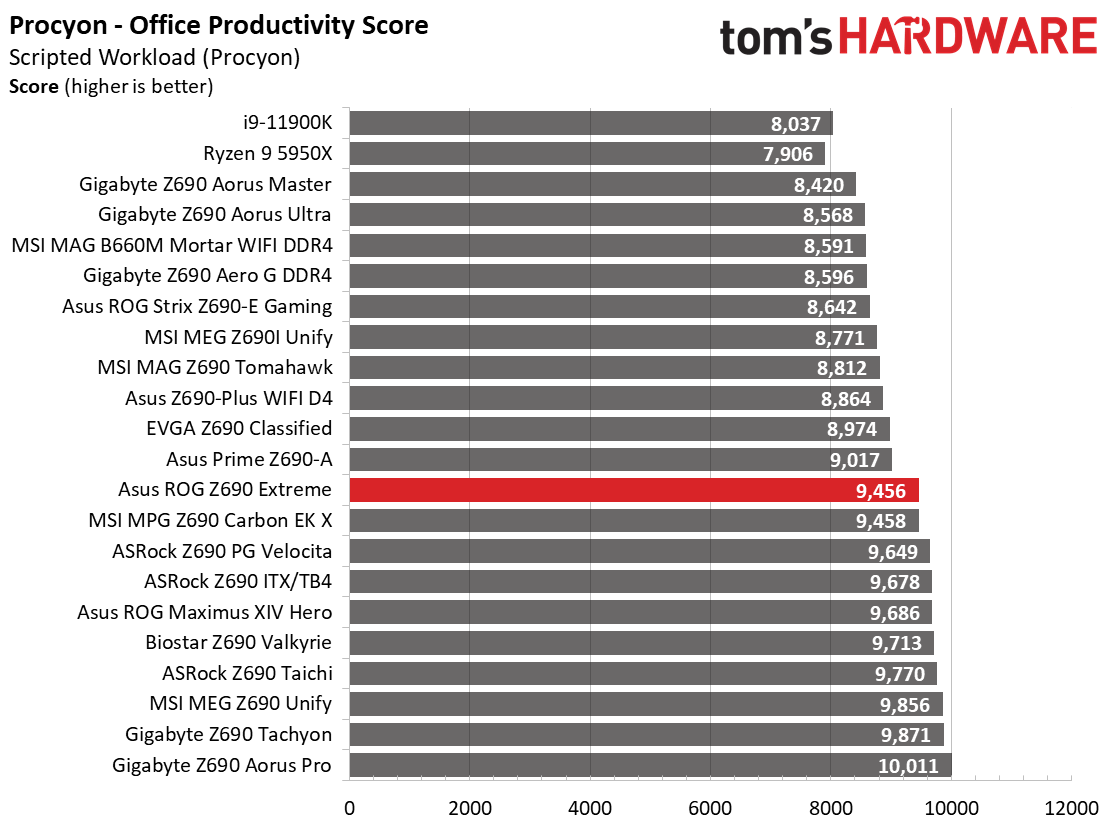
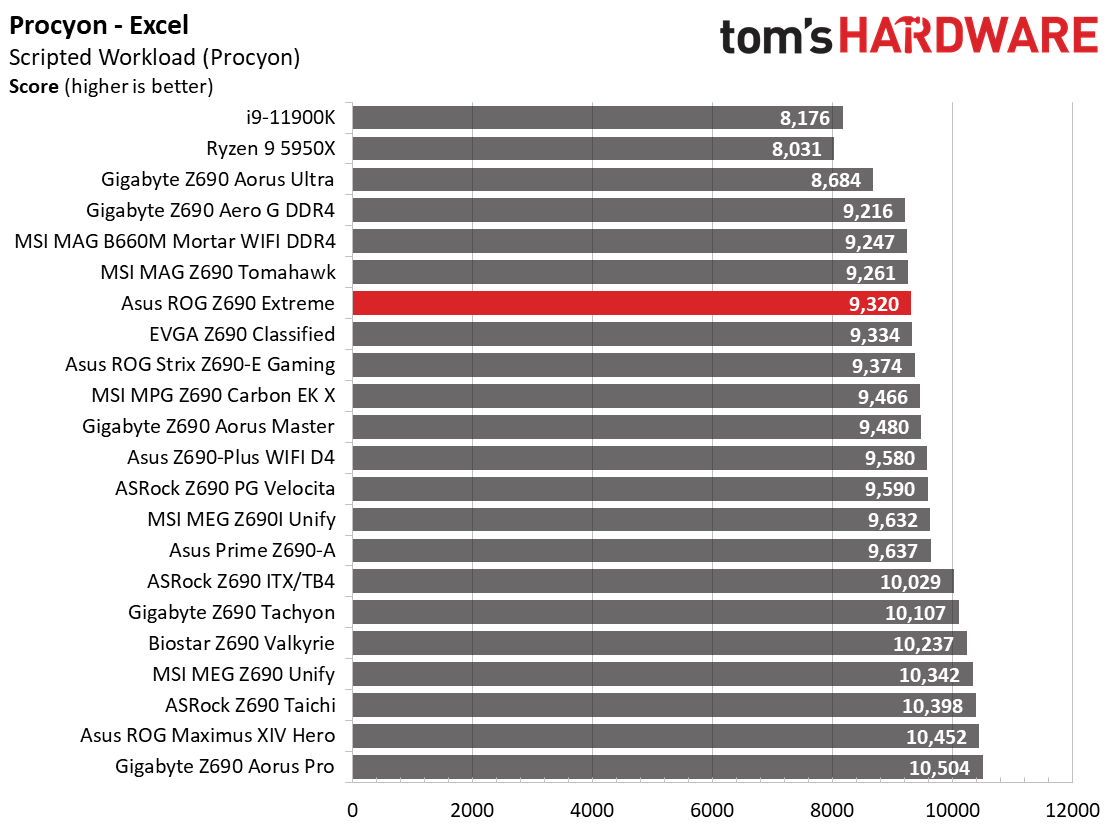
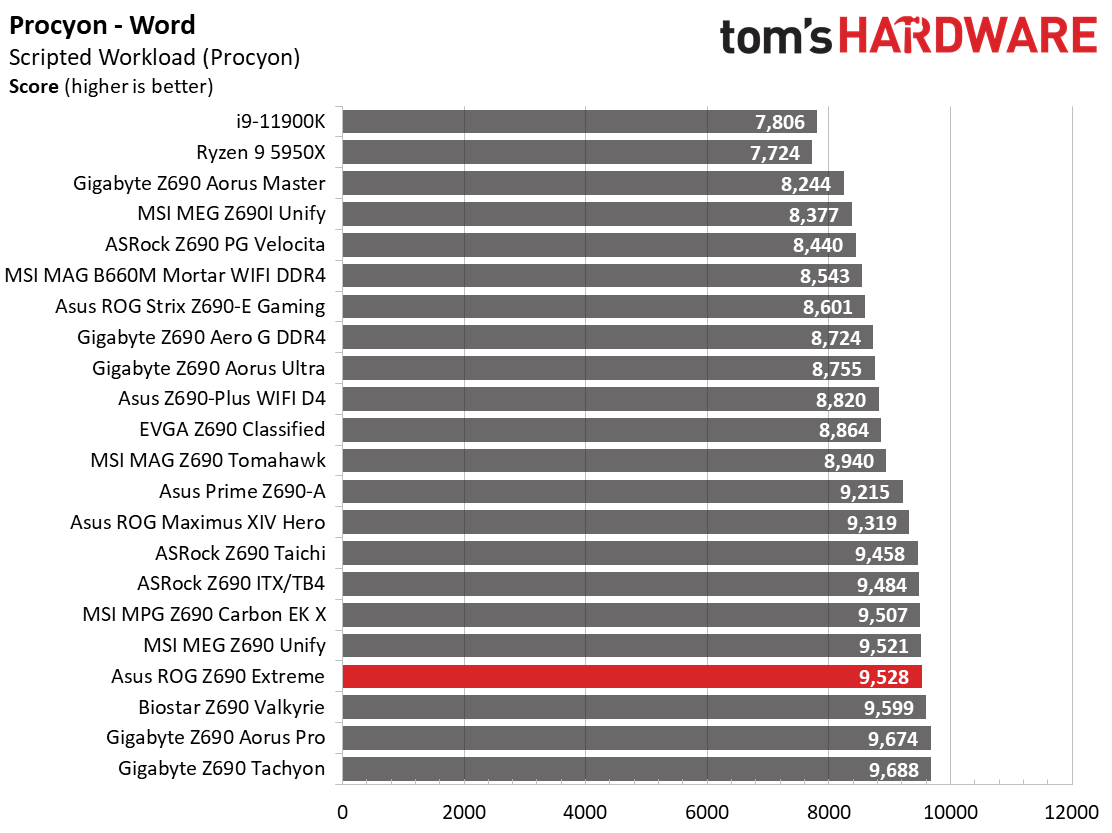

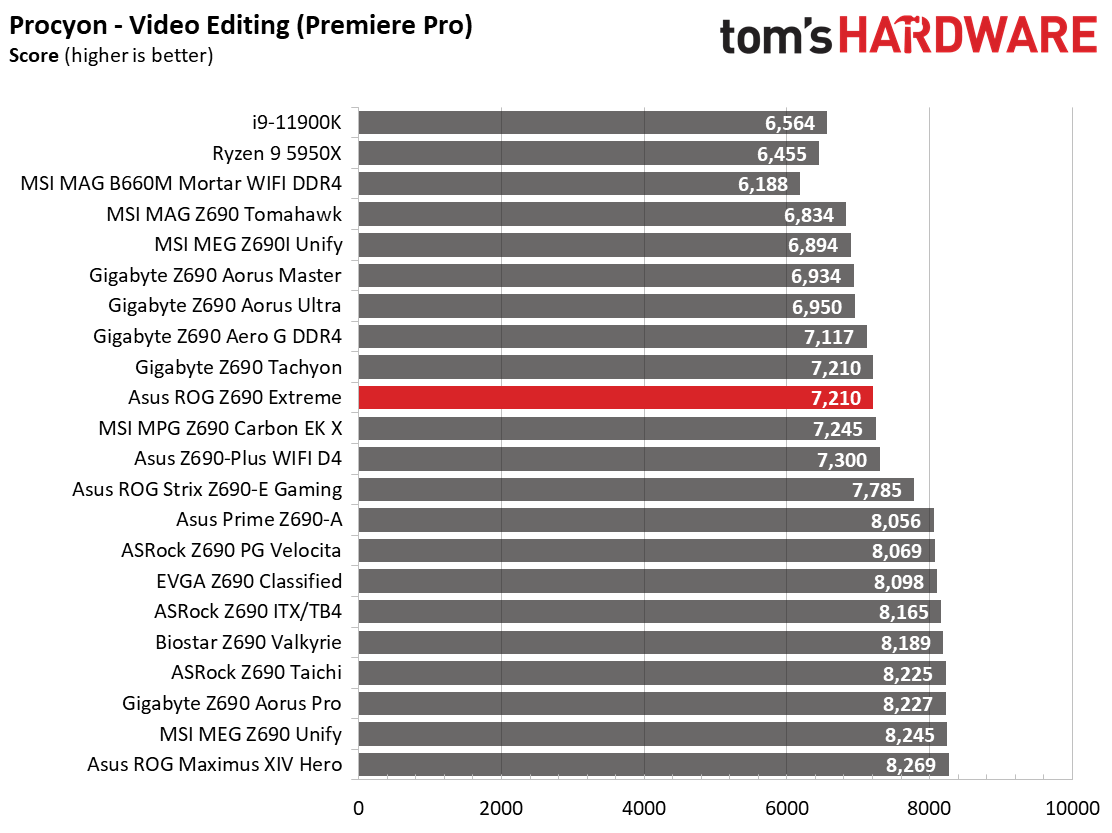
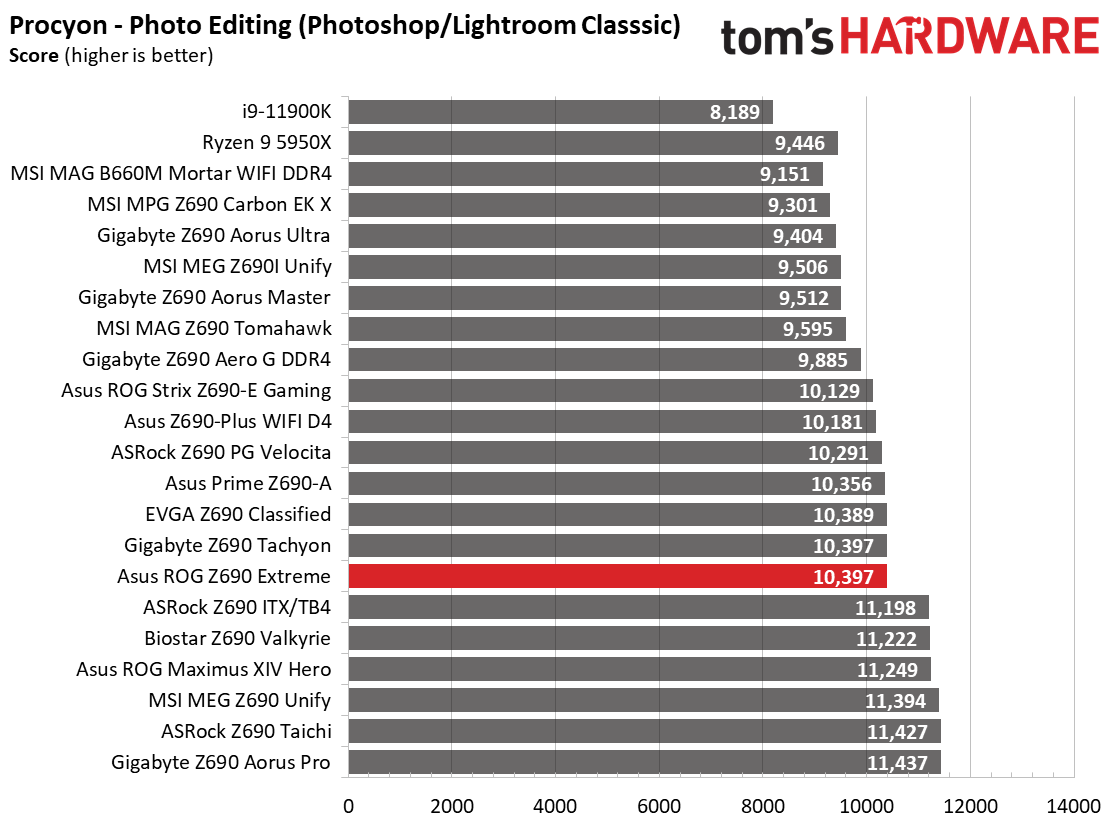
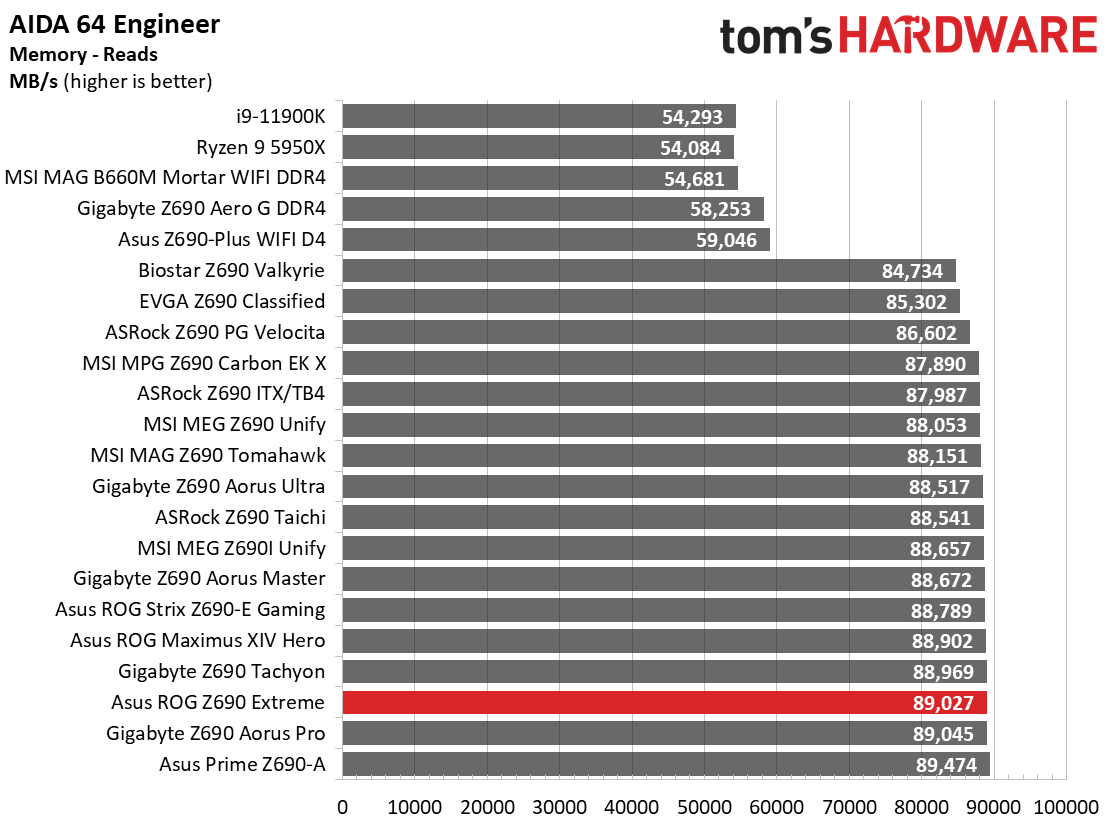


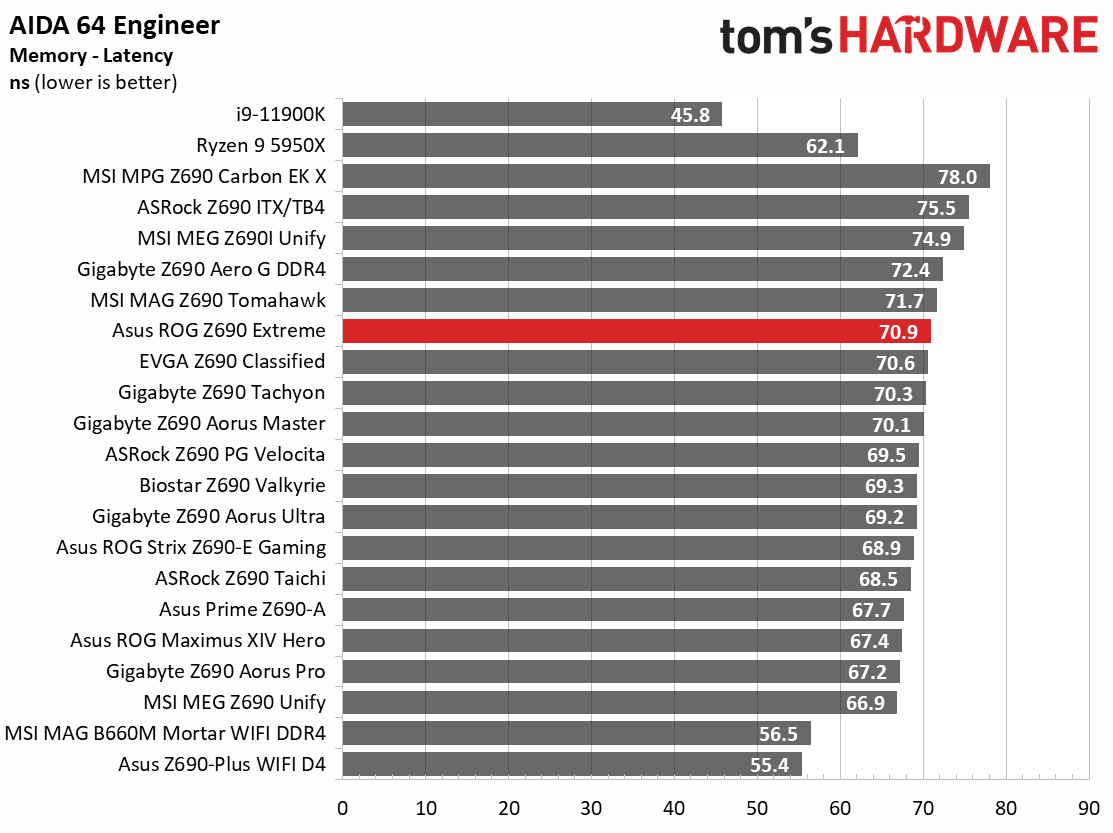
The Z690 Extreme boards did well here, their results competitive with the other DDR5 boards we’ve tested. There’s nothing generally faster or slower here.
Timed Applications
Starting with LAME testing, the Extreme took 9.56 seconds to complete, which is slightly faster than average. The Corona Ray Tracing benchmark's results were also around the average at 53 seconds. Handbrake x264 results were faster than average, completing in 112 seconds, while the x265 results were spot on average at 303 seconds. We didn’t find any performance anomalies here either.
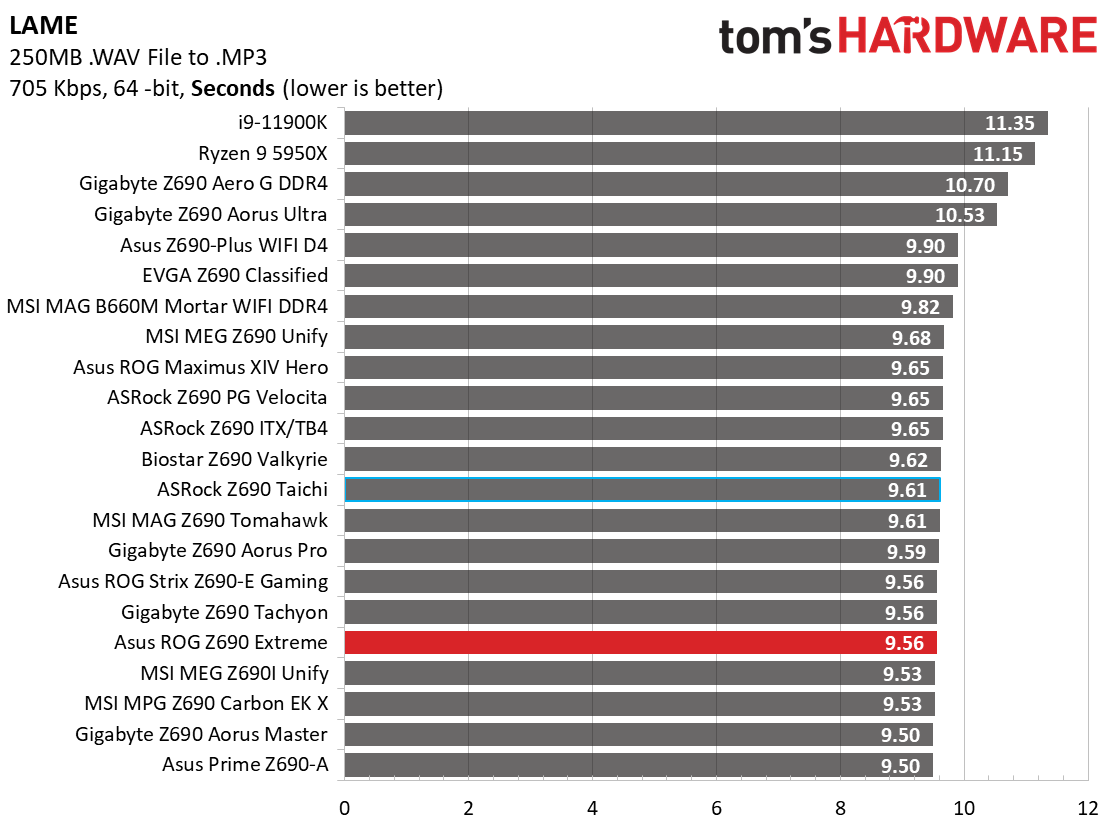

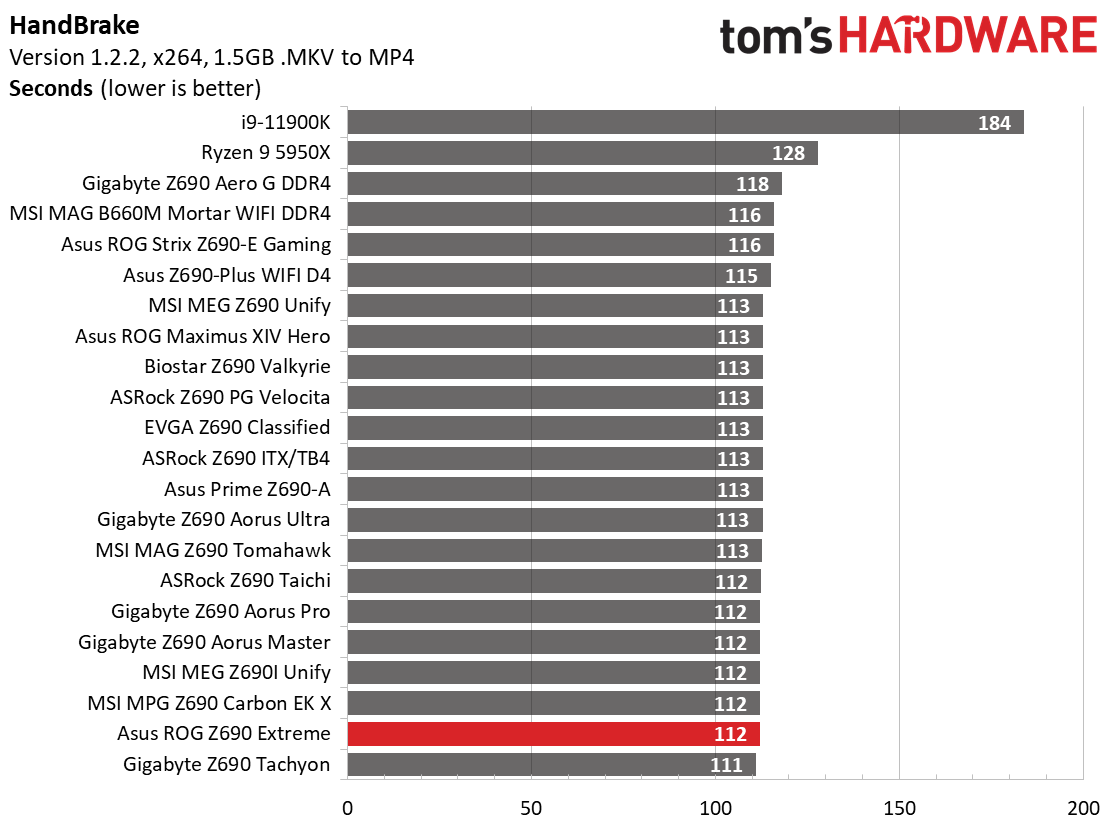

3D Games and 3DMark
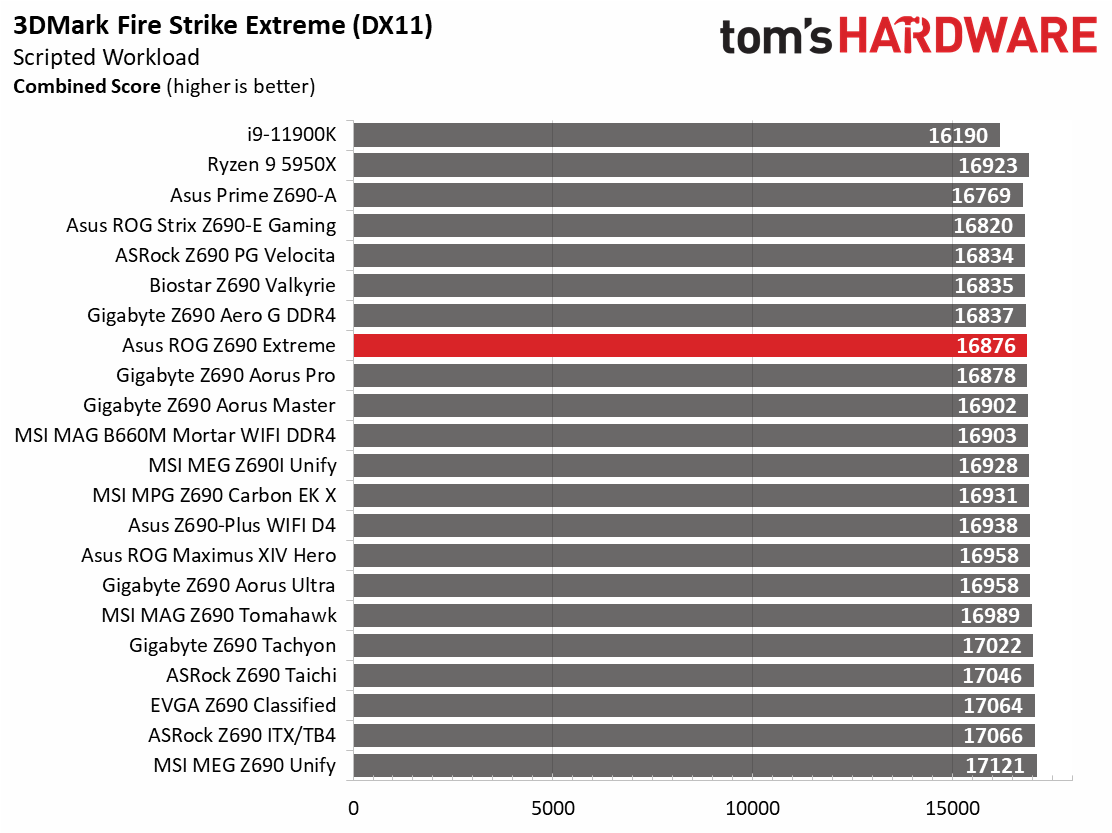
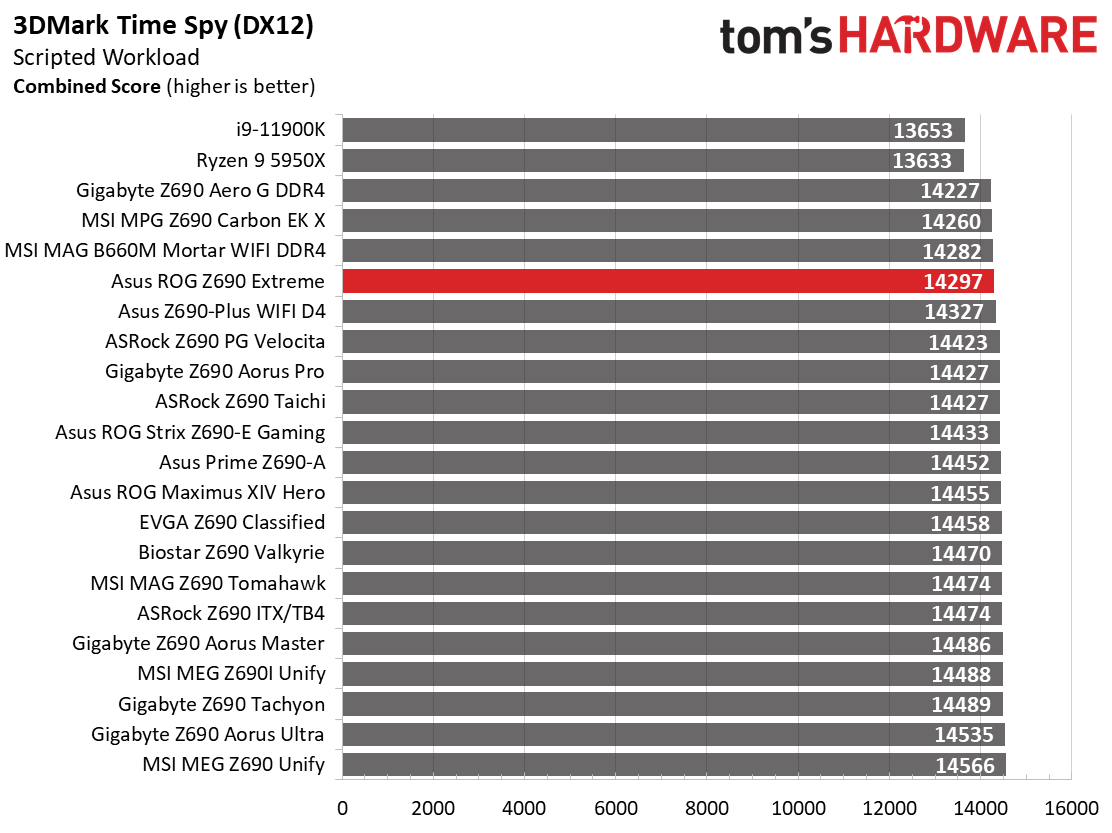

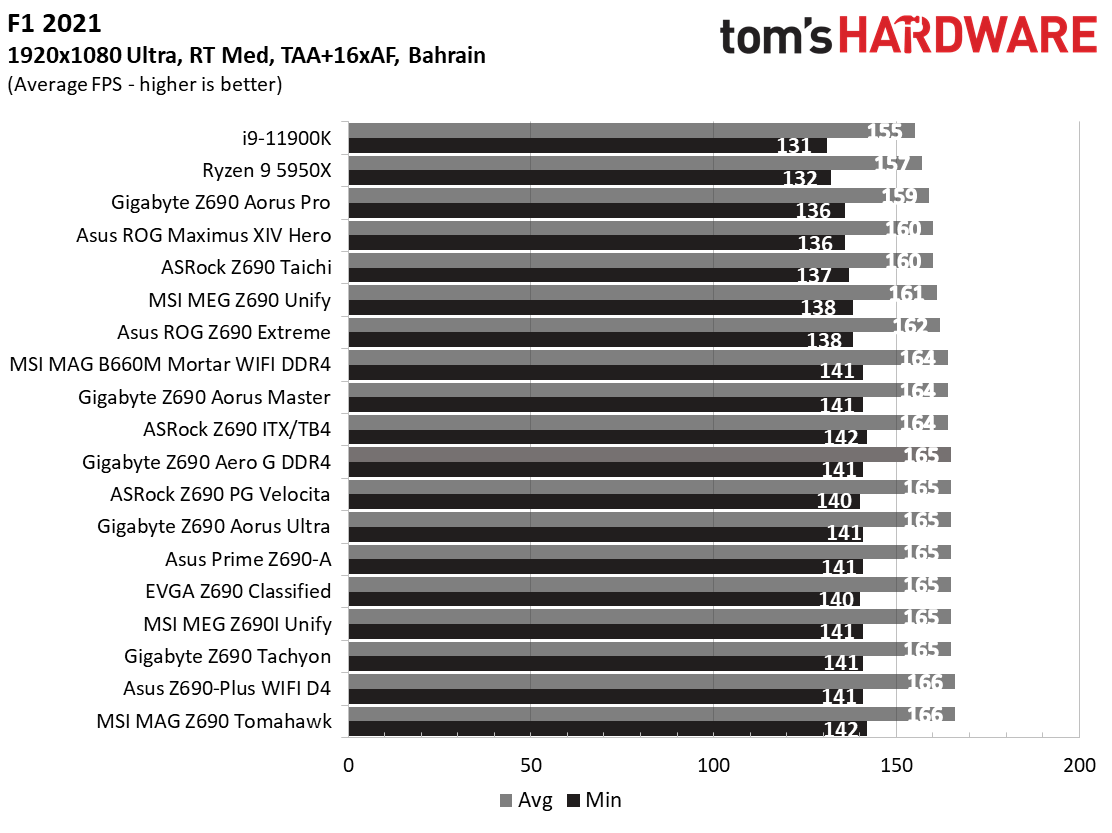
Starting with the launch of the Z690 chipset, we’ve updated our game tests. We’ve updated Far Cry: New Dawn to Far Cry 6 and shifted from F1 2020 to F1 2021. We run the games at 1920x1080 resolution using the Ultra preset (details listed above). As the resolution goes up, the CPU tends to have less impact. The goal with these settings is to determine if there are differences in performance at the most commonly used resolution, with settings most people use or at least strive for. We expect the difference between boards in these tests to be minor, with most falling within the margin of error differences. We’ve also added a minimum FPS value, as that can affect your gameplay and immersion experience.
In F1 2021, the Z690 Extreme averaged 162 fps with minimums of 138 fps, or just slower than average for both. Far Cry 6 results were also negligibly slower than most boards, averaging 135 fps (versus a 137 fps average) with minimums reaching 123 fps, a middle-of-the-pack result. In the 3DMark tests, the Extreme scored 14,297 on 3DMark Time Spy and 16,876 on Fire Strike Extreme, both average or slightly below average. While the gaming tests were a bit slower, you aren’t going to see or feel the meager differences between results here.
Get Tom's Hardware's best news and in-depth reviews, straight to your inbox.
Power Consumption / VRM Temperatures
We used AIDA64’s System Stability Test with Stress CPU, FPU and Cache enabled for power testing, using the peak power consumption value. The wattage reading is from the wall via a Kill-A-Watt meter to capture the entire PC, minus the monitor. The only variable that changes is the motherboard; all other parts are the same.
At idle, the Extreme consumed 88W, which is the highest result so far by a couple of Watts. Load power use peaked at 339W, also on the high side of average. Overall, this is one of the more power-hungry boards we’ve tested, but with the extra lighting and features, that’s not really surprising. The Glacial itself uses just a bit more power to support the additional RGB LEDs on the full cover block, the water pump, and any other fans. Still, that difference would be hard to see on your electric bill unless you compare it to some of the more basic (and a lot less expensive) motherboards. That said, you don’t buy a Ferrari and worry about paying for gas or getting the best mileage. And you generally don’t buy a flagship-class motherboard and worry (too much) about power consumption either.

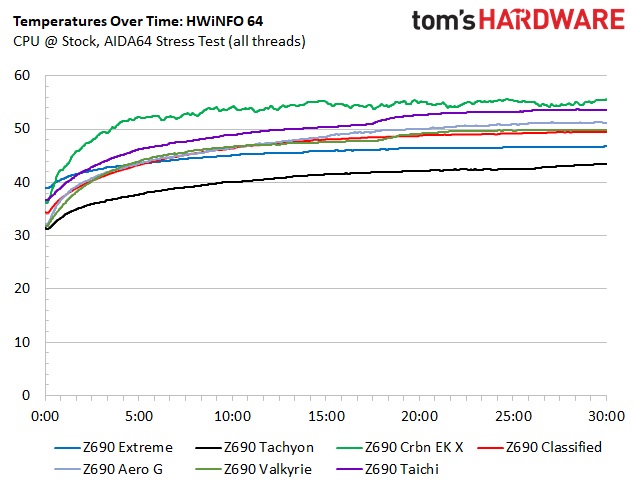
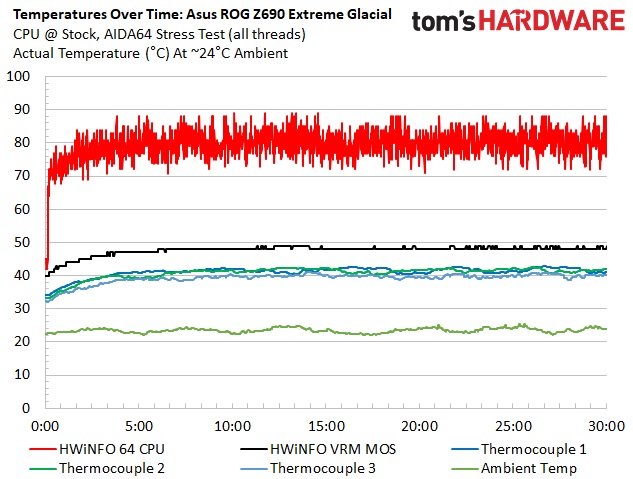
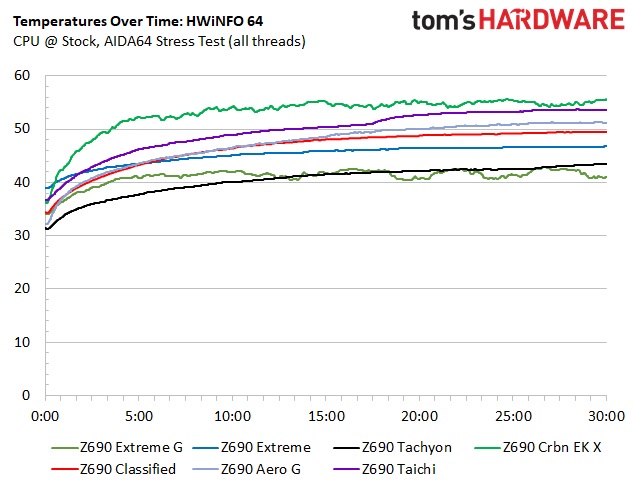
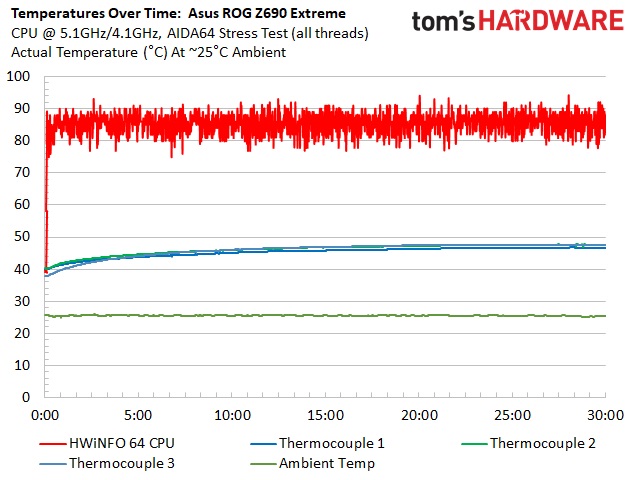


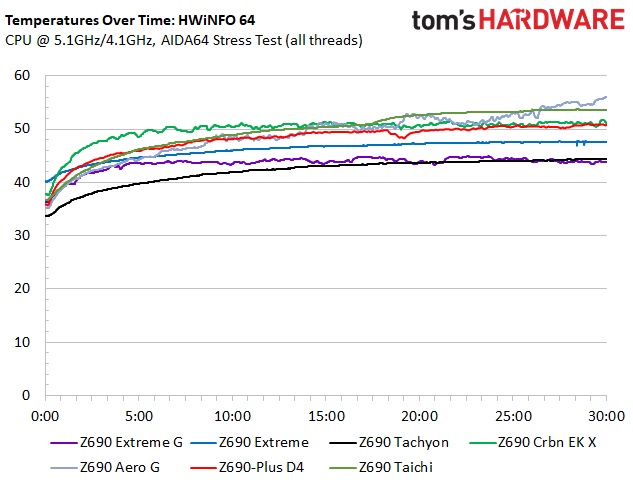
VRM temperatures were surprisingly close between the air-cooled Extreme and water-cooled Glacial. The air-cooled Extreme topped out around 47 degrees Celsius during stock testing and 48 degrees Celsius when overclocked. The Glacial peaked at 43 degrees stock and 45 degrees when overclocked. At first glance, using the Glacial may not seem worth it, but you need to keep in mind that the full-cover water block on the Glacial removes the VRM heat and the CPU, chipset, and M.2 module. We used a 3x120 mm radiator for our testing, which is adequate, but you’ll see better results with the fans turned up (they are forced to ~800 RPM) or a larger radiator. This configuration still beats out nearly every air-cooled motherboard we’ve tested. I suppose the massive heatsinks work really well on the Extreme.
Overclocking
Overclocking with Alder Lake is slightly different from what we’re used to due to the hybrid core configuration. Now, you can overclock the P and E cores separately, though they both use the same voltage domain. You can push one and not the other, or both, so there’s some flexibility. We set an overclock to 5.1 GHz across all P-cores and 4.1Ghz on all E-cores. This yields a 200 MHz bump on the P-cores and a 400 MHz increase on the E-cores. We’re topped out on the P-cores, primarily due to temperatures, but the more efficient E-cores still have some headroom.
Overclocking with the Extremes and the flagship 8+8-core/24-thread i9-12900K proved relatively painless. Since we’ve found our required voltage with our first review, we plugged in that 1.25V value for Vcore, adjusted LLC to “LLC4”, and tested unsuccessfully. Using the integrated voltage read points and a multi-meter, the voltage landed at 1.10V, well below our target voltage. To get in the ballpark, we used LLC1, which then displayed 1.27V. I’m surprised to see so much vdroop with the recommended settings and such beefy VRMs. But once we switched to LLC1, we had no stability issues.
On the memory front, we set XMP, and off we went with our GSkill Trident Z5 DDR5 5600 CL36 Kit, yielding a 600 MHz increase from the maximum rating of the platform. After months of trying, we finally procured a DDR5 6000 kit to use while overclocking. With this ADATA kit, we set XMP, and off we went without issue.
Using our DDR5 6000 kit, the Extreme pushed past XMP to DDR5 6400 with a CL30 rating. Like motherboards that are explicitly made for overclocking, (Asus Apex, Gigabyte Tachyon, ASRock Aqua), there’s more headroom on tap for those who want to push and get every MHz out of the system.
Bottom Line
After working with the Asus ROG Z690 Extreme and Extreme Glacial, there’s no doubt that these are flagship and halo-class motherboards. From the premium appearance and high-end features, the only thing against these boards, or any high-end board, is paying the high price to own one. And at $1,099 and $1,999 for these two, there’s no denying that the price of top-end boards is higher than ever. Sticker shock aside, the Z690 Extreme and Extreme Glacial offer users the pinnacle of hardware for the Z690 platform, including the rare PCIe 5.0 x4 M.2 socket, a premium audio solution, and for the Glacial, a custom EK full-cover water block.
The Extreme’s robust 105A SPS MOSFETs are enough for any overclocking adventures, including sub-ambient cooling. The oversize VRM heatsink does a great job at keeping the power bits running cool, while the water-cooled version does an even better job mitigating VRM heat and also looks better while doing so. The E-ATX boards sport five total M.2 sockets (three onboard, two on the DIMM.2 module), ultra-fast USB ports including Thunderbolt 4 (40 Gbps) and USB 3.2 Gen 2x2 (20 Gbps) and several Type-A ports, none slower than 10 Gbps. If you want to monitor your water cooling loop, there are plenty of headers to connect to, including water flow and temperature sensors which you can also use to ramp up fan and/or pump speeds.
Are there areas to improve? Aside from a lower price (which we want for all motherboards these days), the only other thing that stands out are the dot matrix design features. While the boards give of an extreme premium look and feel, the dot matrix look LEDs just feel out of place to me. That said, the fact that it (and the LiveDash OLED) are customizable, certainly helps. Beauty is in the eye of the beholder and these boards certainly aren’t ugly.
Of course, there is competition in this flagship/halo-class board space. Gigabyte’s Z690 Extreme ($899.99) and Extreme Waterforce ($1,899.99) offer users similar high-end features, including a unique audio configuration, they are also arguably the best-looking and one of the ‘cheaper’ options in this class. ASRock’s Z690 Aqua ($1,299.99) and Aqua OC ($1,399.99) also include an impressive array of hardware/features, including Killer-based networking. Both versions of the board use a water block to cool the CPU and power delivery, with their slick silver appearance differentiating from the other boards. Last but not least is MSI’s Z690 Godlike ($1,999.99). This beast matches the Extreme Glacial in price and comes with a unique LCD touch screen display. It includes a whopping six M.2 sockets (one PCIe 5.0 x4), flagship ALC4082-based audio, and also looks stunning.
In the end, you can’t go wrong with any of these motherboards in terms of performance and features–what any one of them will do your bank account, however, is another thing entirely. Each of these top-end boards has something to love over another, be it price, appearance, or a specific feature one may want or need. Asus’ ROG Z690 Extreme boards bring you a combination of the platform's best hardware and a high-end appearance that you’d be happy to show off. Priced at $1,100-$2,000 will put them out of the price league of most builders, but they do have some of the most comprehensive lists of features around. If you’re looking to build a high-end PC and have the budget to support such a luxury item, be sure the Asus Extreme boards are on your shortlist.
MORE: Best Motherboards
MORE: How To Choose A Motherboard
MORE: All Motherboard Content
Current page: Benchmark Results and Final Analysis
Prev Page Firmware, Software and Test System
Joe Shields is a staff writer at Tom’s Hardware. He reviews motherboards and PC components.
-
wifiburger "Designed to show off the best Asus has to offer" yeah... of course with that crazy price tag on it !Reply
and at the same time, the entry level z690 are complete joke, audio chipset from 10years ago, no usb-c front panel, no wifi, very little fan headers, anemic rear io panel :ROFLMAO: -
WilliamRJK Crossfire does not need to be mentioned as it works on anything with at least 4 PCIe lanes per slot. A tech writer should know that.Reply -
ocer9999 Still preefer the Asrock Z690 Aqua series, if you are on watercooling you most likely be going to overclock and there's no better motherboard than that atm for this intel generation.Reply
